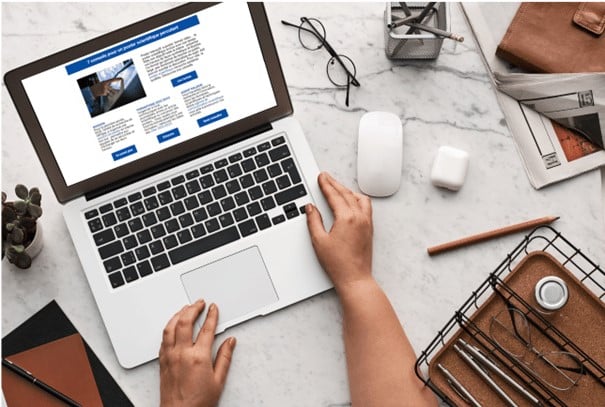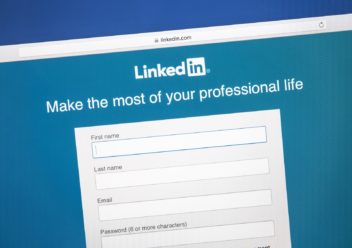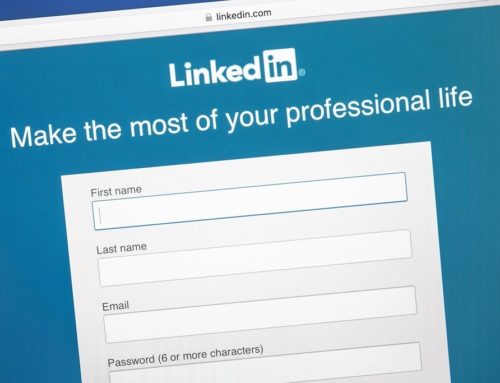Build your reputation
with a newsletter
« Old is gold. » This saying is particularly well suited to newsletters, these periodical emails which are sent to a contact list. Newsletters have stood the test of time because these tools make it possible to both gain recognition and to keep contact with one’s community. They serve as a regular feature to promote the latest news to your contacts and are an efficient way of proving your expertise in a field. Newsletters are easy to implement and can rapidly produce great results.

1. Consolidate your network and increase your visibility
Newsletters are not new, but they work. Sending a regular email to your contacts is a wonderful development tool for your activities. Newsletters allow you to retain members in your network, to remind them you exist (“Out of sight, out of mind”) and to show them the extent of your skills. It also builds your reputation and makes your expertise known to new subscribers.
A newsletter can also help you benefit from a kind of “word-of-mouth”. Subscribers can easily transfer your email to one of their contacts and thus help you to expand your reach and grow your network.
In addition to increasing the visibility of your work, a newsletter helps to increase the popularity of your website. Generally, articles and news are followed by a link to a more extensive article hosted on your site. By clicking on the links in newsletters, readers generate traffic for your website. And the more users spend time on your site, the better its rankings will be in search engines.
2. Focus on quality over quantity
The success of your newsletter depends on the quality of its content. Thus, it is important to work on the text of your newsletter. Unlike a blog article which needs to be thorough to be appreciated, your newsletter is more likely to be read if it is not too long. As such, you should favour short texts to summarize the main information shared with your readers. In addition, make short and simple sentences.
Choosing your words carefully, means avoiding “spam” words. These are words which can lead anti-spam filters to mark your email as undesirable and send it to the junk mail folder of your contacts. These terms generally refer to discounts or potential gains. For example, spam words include “free”, “gift”, “giveaway”, “special offer”, “click here” or even “buy”.
The quality of your newsletter also depends on its layout. Different mailing tools such as Mailjet, Sendinblue, Mailchimp or Sarbacane allow you to create nice layouts easily. Customize your newsletter with your visual identity, add photos and create different boxed texts. This will help you to create a dynamic and professional newsletter. It is also a good way to limit the number of words to avoid overloading your content.
Finally, pay attention to the object of your email. It is important to make it catchy. Even if you wrote high-quality content for your newsletter, if the object does not catch the interest of your subscribers and make them want to open the email, then your newsletter will not be read. Be aware though that you should avoid using “spam” words in the object of your newsletter here as well.
3. Keep in mind your objectives
To make your newsletter effective, you need to clarify your goals. For example, to retain customers, it is important to send a regular newsletter, on a weekly or monthly basis. As such, you need to prepare the content of your newsletter beforehand and to plan new subjects in advance with an editorial calendar.
If you are looking to urge readers to stay or to become faithful members in your network, your content must include calls-to-action. Do not make the mistake of becoming pushy as in the case of spam emails. Nevertheless, try to encourage your readers to check out your website, to read your articles, to subscribe to events or to answer inquiries.
Finally, when you send your newsletter, your main objective is -and always will be- to incite your subscribers to read it by offering content that they appreciate. Therefore, think of your readers. Put yourself in their shoes: what would you like to read in this newsletter? In what format? Because, in the end, your reader is a person, not a robot. You must please the individual person behind their screen.
4. Expand your address book
Launching a newsletter is all well and good, having contacts to send it to is better. To increase readership, you need to gather subscriptions. There are several ways to do this. The first, is to add a subscription module for your newsletter on your website. You can insert it at the bottom of the page, in a prominent place, to make it accessible everywhere on your website. Another method consists in capitalizing on events you organize to ask participants if you may add them to your newsletter subscribers. Finally, you can add a subscription link in your communications and email signatures.
Furthermore, all the members of your network do not have the same interests and do not necessarily wish to receive the same content. Depending on your objectives and the preferences of your contacts, it may be relevant to create several specific newsletters instead of just one. For each theme, create a targeted contact list. To make sure that the recipients of these newsletters do indeed have a particular interest for the subjects, you can ask them to choose their preferred topics at the time of their subscription.
Though their use is sometimes neglected on behalf of more fashionable communication tools, newsletters are nonetheless very useful and effective. Easy to create and to launch, they are an irreplaceable means of keeping in touch with your network.
Would you like professional advice and guidance to launch your newsletter? Contact-us.
> Media
13/03/2023







